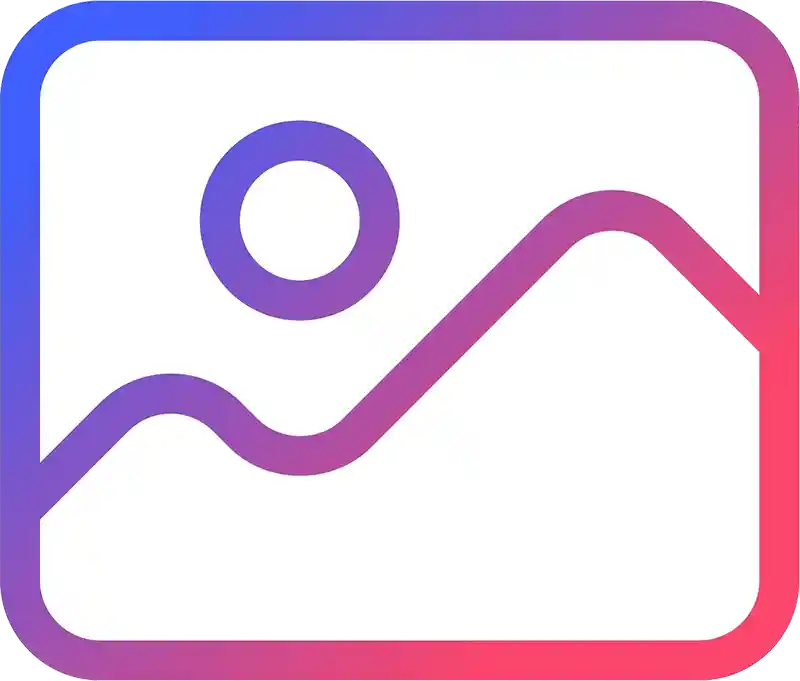Marketing your product or service properly comes down to understanding your audience’s desires and needs as well as the segments your audience is comprised of. What better way to keep these ‘personas’ in mind than to make sure you’ve got a character sketch of each? That and a paragraph summary. This way, when you’re trying to explain your business’s target audience(s) to new employees, well you really won’t have to try too hard. And, when it comes time to introduce a new product or service, you’re going to find figuring out who to target super easy.
In this post we’ll explain what a persona is and how to create one. If you’re considering a website redesign, this is definitely a good article to read before you begin the process.
What is a persona?
It’s probably easiest to think of a persona as a ‘character’. As with creating a character sketch for a novel, developing personas means breaking your audience into segments. Each persona or character will encapsulate a section of your audience. So, for example if you’re a company that sells LED light bulbs to both businesses and consumers, one of your personas may be ‘Savvy Stockist Sara’. I’ve been creative with the name and I suggest you do the same – just so your personas are easier to remember.
 Our ‘Savvy Stockist Steve’ persona is about 35 or 40 years old. He’s had a solid education, probably up to undergraduate level, but not beyond. He’s got an analytical mind and he likes numbers. A lot. He prefers working with others who are as motivated and organized as he is and who have a lot of energy. In his downtime, Savvy Stockist Steve likes to go out for drinks with friends. He’s not married but doesn’t mind as he likes to be out and about building relationships with others. He’s driven to help his own company succeed but also loves his job. He is self-reliant and really doesn’t need managing. When he needs to place an order, he’ll probably call the company first – have a friendly chat with the staff member and then get right to the point.
Our ‘Savvy Stockist Steve’ persona is about 35 or 40 years old. He’s had a solid education, probably up to undergraduate level, but not beyond. He’s got an analytical mind and he likes numbers. A lot. He prefers working with others who are as motivated and organized as he is and who have a lot of energy. In his downtime, Savvy Stockist Steve likes to go out for drinks with friends. He’s not married but doesn’t mind as he likes to be out and about building relationships with others. He’s driven to help his own company succeed but also loves his job. He is self-reliant and really doesn’t need managing. When he needs to place an order, he’ll probably call the company first – have a friendly chat with the staff member and then get right to the point.
For our fictional LED lightbulb supply company, creating personas like ‘Savvy Stockist Sara’ or ‘Intern Ian’, is a good way to nail down who the targets of your marketing are. After all, HOW you market your products will depend on your audience’s desires, age, behaviour, motivations, education and a slew of other factors.
How do you create a user persona?
Now you’re convinced of the benefits of persona development, how do you go about creating your personas? There are a few ways to do this. Ultimately you will need to begin by segmenting your audience into groups. Perhaps you only have four ‘types’ of customer or client, perhaps you have 10 or even 15. Whatever it is, the goal is to divide your 10, 000 customers into segments that are created by grouping their similarities.
If you don’t already have a good idea of the segments your audience can be broken down into, you’re going to need to conduct a bit of research – either by asking your customers to fill out surveys or by finding a way to interpret customer/client behaviour – online and offline. You need to find the pattern that helps you define the type of user you are dealing with. Don’t forget that your current marketing can help you figure this out. If you’re already doing something like ‘email marketing’, consider your email segments as a starting point. From there break it down even further.
Or, try sitting down with your staff to brainstorm. Make sure you’re speaking with the people that deal with clients on an ongoing basis. This might include your sales team, the social team and the marketing team. They’ll likely have insight into questions you don’t even know your customers are asking!
Remember that you can refine and adjust your personas over time. They are certainly not set in stone and as things change in the marketplace and as your products or service offerings change, so too will your user personas.
Actually creating a persona
John Haydon, founder of Inbound Zombie, has listed eight things you need be thinking about when creating user personas. We’ve taken his top-level suggestions and bulked them out with our own opinions and experience.
1. Define your segments
Define the segments your target audience comprises. For example this might be retired women, teenage social media fans, political activists, email subscribers, inactive members, single mothers, sports enthusiasts…the list is endless. If you’ve got far too many to choose from, consider picking out those segments you WANT to target. Perhaps if you’re a digital agency like us, you’d pick AspDotNetStorefront website owners, CEOs with an analytical mind-set, Established B2B business owners, shop owners looking to move to a web-based store, marketing staff wanting to make more of their company’s social presence and so on. This is a good starting point and will make creating personality types (personas) a lot easier.
2. Define your demographics
Despite the fact that the British and the Americans both speak English, marketing in each of these countries is fundamentally different. Typically the Americans like to say it as it is, whilst the British, historically have taken a less confrontational approach to their marketing. They’ve also got a very different sense of humour to the Americans. This is the same with any country (and you’ve often got the added culture difference to account for as well). What this means is that you’ve got to know where your audience comes from at the start. A few questions you might ask include:
- Where do they live?
- Do they have families and children?
- Are they single, married, divorced?
- How much do they earn?
- Have they got a HS diploma, a BA or BS, an MA or a PhD? What is their level of education?
- Male or female?
- How computer literate are they?
3. Articulate their values and beliefs
If you’re going to do this properly, you’ve got to get inside your customers’ heads. After all, you need to know how and what they’re thinking when they visit your website.
- What are they passionate about and what drives them?
- What inspires them to share information with others? HOW do they then go about sharing this information? Word of mouth, social media, email, etc.
- What are their personality traits or characteristics?
- Are they conservative, liberal or somewhere in between the two?
- What do they want to achieve or where do they want to be in 10 years?
4. Get under their skin
Next, get under their skin. Yup, this is where you get personal. What makes them angry? What makes them happy? What irritates them? You might want to put yourself in their shoes. And perhaps even do so whilst considering your website. Is there anything that will put them off – perhaps a slow loading time or a long checkout process? On the flip side, what on your website will keep them coming back for more and will make them respect you? Maybe your contact details are easy to find and they can contact you in a variety of different ways – email, telephone, social media…
Also, think about how they view themselves. How are they trying to create a meaningful life? What behaviours are they trying to change? There are no rules here; it’s just really an opportunity to bulk your personas out. Perhaps you’re dealing with an artist who is trying to find meaning by pursuing only the things she enjoys doing. Or perhaps you’re dealing with a business man who defines his success via the money he brings in – ultimately getting satisfaction from being able to support his family and give them a good life.
5. Define the value they get from your organisation
What is it about your organisation that attracts them to you? What do they value about your company? Is it the excellent customer service? Maybe it’s the quality of your products, or the fact that they can rely on you to pull through – after all you’ve been in the industry for 100 years. You must be doing something right!
In this step, you have to start by thinking about your company and about your own unique selling points. Once you’ve done this, don’t automatically infer these are the reasons your customers like you. Make sure you’ve asked a few of them for their own reasons. It may surprise you – especially because they’re seeing you from the outside and in comparison to your competitors.
Here’s a sample personality to show you what I mean:
‘Number Nathan’
 Number Nathan has an analytical mind. He defines success by a number of factors (more website visits, an improved conversion rate, a lower shopping cart abandonment rate, a better bounce rate) that in total contribute to an increase in sales/leads. Number Nathan incorporates his work into his personal life, as after all, work IS his source of enjoyment and it gives him a sense of achievement. He’s got high expectations of his employees and doesn’t make quick decisions when it comes down to selecting a business partner (or digital agency). You can really only appeal to Number Nathan via logic, via proven results and by being straight to the point. You’re most likely to reach Number Nathan via telephone though often he’ll be too busy and you will need to make a personal appointment to meet with him. He is not likely to cancel on you as sticking to his commitments is part of the reason he has been successful. Number Nathan does not rest and as such, you can’t rest.
Number Nathan has an analytical mind. He defines success by a number of factors (more website visits, an improved conversion rate, a lower shopping cart abandonment rate, a better bounce rate) that in total contribute to an increase in sales/leads. Number Nathan incorporates his work into his personal life, as after all, work IS his source of enjoyment and it gives him a sense of achievement. He’s got high expectations of his employees and doesn’t make quick decisions when it comes down to selecting a business partner (or digital agency). You can really only appeal to Number Nathan via logic, via proven results and by being straight to the point. You’re most likely to reach Number Nathan via telephone though often he’ll be too busy and you will need to make a personal appointment to meet with him. He is not likely to cancel on you as sticking to his commitments is part of the reason he has been successful. Number Nathan does not rest and as such, you can’t rest.
See? Not too hard and actually, it’s enjoyable. Make sure though that you’re open-minded enough to change your personas if they don’t quite match up or if things change over time. And, don’t forget to add a bit about family and relationships. How people deal with others is a big reflection on how they want to be dealt with.
6. Give them a face and a name
This is the fun part and it means you’re near the end! In the above examples you can see I’ve made excellent use of alliteration. This is simply to ensure I’ve created memorable personas. I don’t want to be searching my desk drawers or my desktop folders for the persona outline every time I need to reconsider our internet strategy. I need to remember these guys by their names.
When I’m developing characters for my own fiction writing, I like to make use of Pitnerest. One of my favourite Pinterest features is the ability to create ‘Secret Boards’. This means that you can save or ‘pin’ pictures of people to private boards. You can also include a description below each picture (basically your persona sketch). If you create your company’s secret persona pinboard, you will also easily be able to share it with only those people you choose to add.
7. Share your personas
If Pinterest is not for you, simply type up a document and share it. Don’t forget to include the pictures though, they really do help when it comes to memorisation. And, if you share your personas, your whole staff will have a better understanding of who you are targeting. This will help them refine their own efforts and bring a sense of fun into the mix. They may also give you feedback if they don’t quite agree or if they think you need to add or subtract a persona. Businesses are always changing. Don’t assume yours won’t.
8. Refine your persona
Over time you’ll have to adjust things. And when it comes time to developing a new website, or when it comes to designing a new site, you may want to give those personas a review.
Once you’ve got the full list of personas, go back to considering how these groups of people will browse your website. What pages will they view first? What search queries will they type to find your service/product pages? Will they use Google or a mail-order catalogue, or perhaps a directory? What types of call-to-actions will they respond to? What will make them share your content? What will put them off? (ideally nothing!)
Are my self-created personas accurate?
Given that I’ve mainly discussed how to create personas without worrying too much about customer surveys and complex research, your personas are honestly only as accurate as your knowledge of your customers or clients. Never forget that your customers are more than their demographics. Just because they’re married, have children and stable jobs, does not mean they do not have lofty goals. You are after all dealing with humans. And humans are changeable. Don’t assume you know best. Make sure you get a second opinion.
Already got your personas mapped out?
We’d love to hear from you. Have you got your own personas already designed? Do share them with us. We’ll be happy to have a look over them as well! Get in touch on Facebook or Google+. Or, simply leave us a comment below.
Website Design by Xanthos
If you’d like us to help you redesign your website, get in touch. We can give it an update and make sure that your user experience accurately reflects your customers’ personalities. Our web design services aren’t just going to provide you with something aesthetically pleasing, but they’ll also help to improve your conversion rate and to improve visitors and leads.








